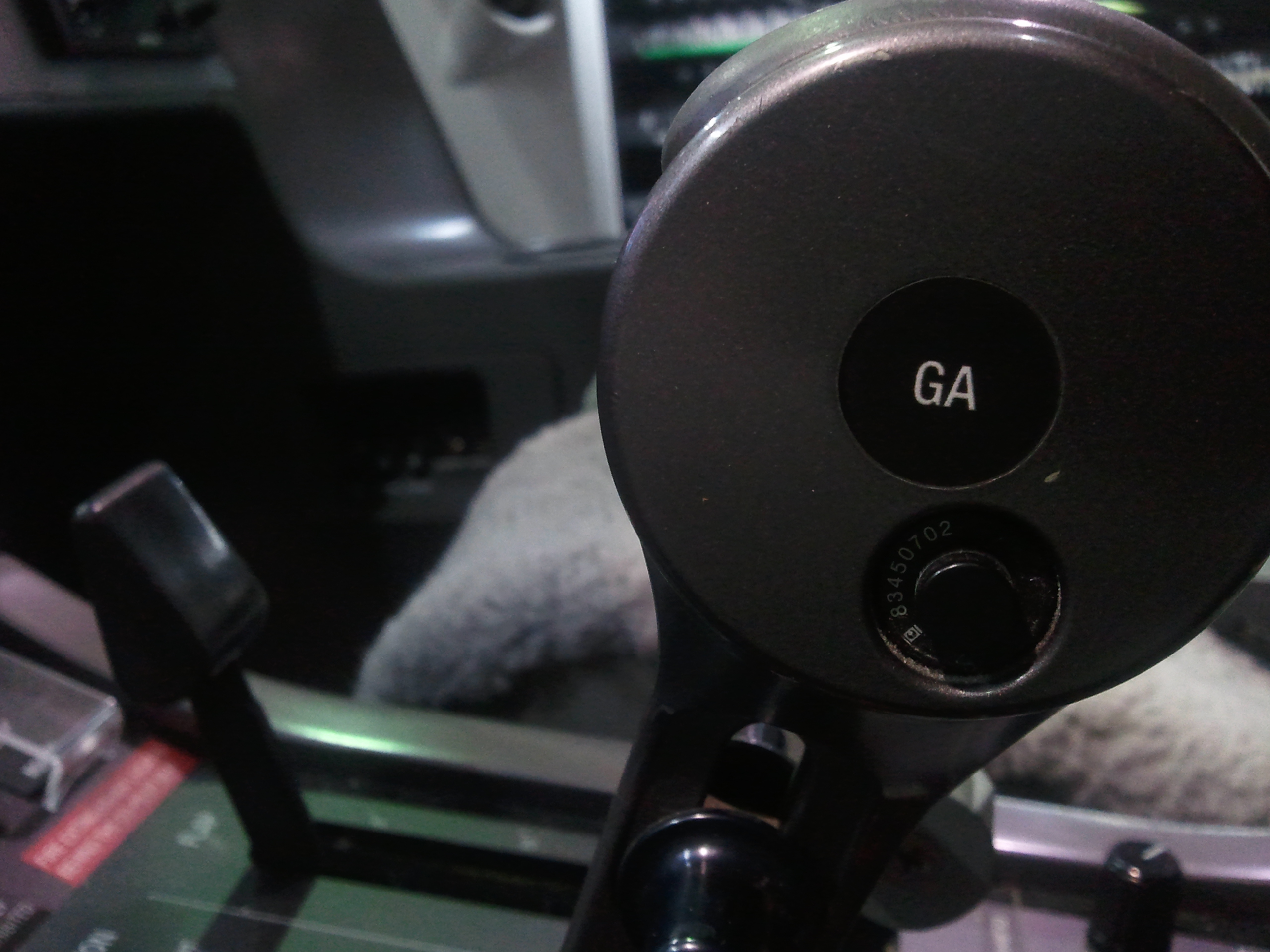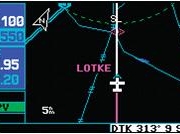 “Pulse 101 MEDIVAC, in case of a missed approach, you are cleared to climb and maintain 11,000′, proceed direct to the YTS VOR”.
“Pulse 101 MEDIVAC, in case of a missed approach, you are cleared to climb and maintain 11,000′, proceed direct to the YTS VOR”.
Sounds familiar in some way? I certainly hope so! Everybody has heard the old addage a good landing starts with a stabilized approach. But every instrument rated pilot also knows that a successful missed approach starts during the cruise segment, before the decent has even started. A few hundred feet over the ground in a low-energy situation is not the place you want to be left wondering what next?
Today, I had the pleasure to conduct a missed approach in actual minimal conditions. Although we (the crew) had checked the weather and accepted the trip in accordance, there remained a chance for a missed approach due to temporary weather restrictions. I remember some of my first missed approaches, especially during training, where it seemed like the workload was so heavy and I was slowly drifting behind reality, trying to catch up with the aircraft, ATC, procedures, navigation, etc. The fun part of today’s experience was not as much the action of pushing the power leaver to MCT, but rather the fact that the whole procedure was conducted perfectly.
But calling “max power” and “gears up” is only a tiny part of the big picture. In fact, there are three crucial parts to the art of a successful missed approach: Preparation, Execution, Transition.
The preparation. This part starts, like I mentioned before, during the cruise part of the flight. By the time you level off, you should already have a general idea of the weather at destination. Having checked METARs & TAFs, along with the pertaining graphical wx maps before leaving, your crew (or yourself if you are single pilot) should already be aware of any chances of a missed approach. As you near your destination, gather any up to date weather. If the odds look bad, make sure to discuss your alternate options (between the crew, and with dispatch). Once a concensus is reached, contact ATC and request missed approach instructions to your alternate airport of choice. You don’t have to follow the published missed approach procedure if ATC is willing to give you one more tailored to your need. Finally, brief the procedure and execution thoroughly during your approach briefing. What. When. To where. Brief everything, and execute it as briefed.
The execution. So now comes the artistic part of the whole thing. I call it an art because, despite a lot of training and planning which goes into this phase of flight, it remains one of the busiest and most demanding. The art consists in making it as seamless and streamlined as possible. Let’s review the execution of a missed approach procedure as outlined in our SOP.
Now here you are, at your Missed Approach Point (MAP). No runway in sight. Like the Hitchhicker’s Guide to the Galaxy says so well: Don’t Panick! If you planned and briefed, the rest is pretty straight forward (except for a few exceptions relative to the PC12NG.)
1) Go Around Switch. Most airplanes from light twins and up have a Go Around switch integrated on the Power Lever(s). That button’s purpose is very simple: activate the V-bars (Flight Director) and bring them up to a wings level, 10° nose up attitude (usually).
2) Power Control Lever – Full Power is the next logical step to the execution. You’ve now established yourself in a positive climb attitude and provided the airplane with the power to do so.
3) Commence Climb. If the autopilot is on, the aircraft will follow the command bars and commence the climb by itself. Otherwise, well, bring the nose up and follow the V-bars!
4) Flight Director – HDT/T or NAV. Now comes the tricky part of the execution. In the PC12NG, pressing the GA button on the PCL will engage two modes on the flight director: GA (pitch) and ROLL. Even if you were following your FMS on a GPS approach (NAV mode) or flying a LOC or ILS (APR mode), the airplane reverts directly back to ROLL, simply straightening the wings for the climb. It is the pilot’s responsibility to ensure that the correct mode is activated after the aircraft is established in the climb to follow the correct missed approach clearance/procedure. Soon this will be changed though and the FD will remain on the lateral navigation mode used during the approach.
5) Flaps. Don’t forget to bring your flaps back up to the recommended setting for the GA. In the PC12NG, flaps are to be retracted to 15° or maintained there until the aircraft passes 400′ AGL/101 kts in the climb.
6) Landing Gear. Clean yourself. Clean yourself. Clean yourself. And then again! As soon as you your VSI indicates a positive rate of climb, your gears should immediately come up to allow max climb performance.
7) Climb to safe altitude. This one can be read and interpreted in different ways. If you have receveived a missed approach intruction from ATC prior to commencing the approach, that altitude should have been set in your altitude select box as soon as your last minimum altitude was captured on approach or you captured the glideslope on an ILS. If you don’t have an altitude select box, make sure not to forget that your airplane will simply follow the flight director on GA mode until told otherwise. This is another important where preparation will ensure that you are aware and ready to input the correct “safe/cleared” altitude to avoid busting your clearance.
8 ) Ice protection. Think ahead (or back in this instance) and try to plan for any icing you encountered during the descent. On the PC12NG, if the propleller de-ice is on as well as the turbine inertial seperator open, the airplane will set itself to “Pusher-Ice Mode”, indicating to the pilot that it will be activating stall protection 8° earlier than usual. This could lead to a potential hazard in low energy situations during GA and should be monitered closely. Make sure you know your airplane’s limitations and respect the environment’s hazards (high windshear, icing, etc)
9) ATC. You know it. Aviate. Navigate. Communicate. Last but not least, be sure to make it known to ATC and the appropriate airport frequencies that you are on the missed approach procedure, following your clearance to [altitude] direct [waypoint].
Hey.. now that wasn’t so hard! We’re now finally out of harm’s way, fully cleaned up and on our way to our alternate. What’s next?
Transition. You planned it, you executed it, now if all is going according to plan, you should know exactly where you are headed to. Make sure to take time to advise your flight dispatch (if applicable) of the diversion and your new ETA, and plan for any needs you might have once you arrive there (fuel, de-ice, etc). Don’t forget to keep monitoring the weather to ensure a safe arrival and sound decision making.
Sometimes the transition does not leave you with much time between the level up from your missed approach and the start of your approach at your alternate. Always make sure to prioritize approach planning, and don’t let yourself hanging high because you ran out of time and found yourself on a steep vertical descent profile to your destination, rushing through checks and briefings. If needed, pull back the power or ask for a hold to allow for appropriate planning. Once again, there are no rules stating that you have to fly at full speed or according to one specific route. ATC is very flexible and they will understand and help on those dreary days.
Today, *almost* everything went smoothly. Remember the transition? Well my alternate was fairly close to my original destination, and when planning my descent profile I found myself joining my final approach course a bit high and fast. Needless to say that the two crew environment is invaluable in those situations, and the situation was quickly sorted, ending our flight with a smooth, soft-kiss landing.
So next time you look at the weather and it doesn’t look so good, simply remember those three simple steps: Plan (brief), Execute (as briefed), and Transition (again, as briefed). It will make your life a lot easier, and avoid awkward situations involving low altitude, low speeds, and high stress!







Awesome GA lesson 😉
Awesome GA lesson 😉